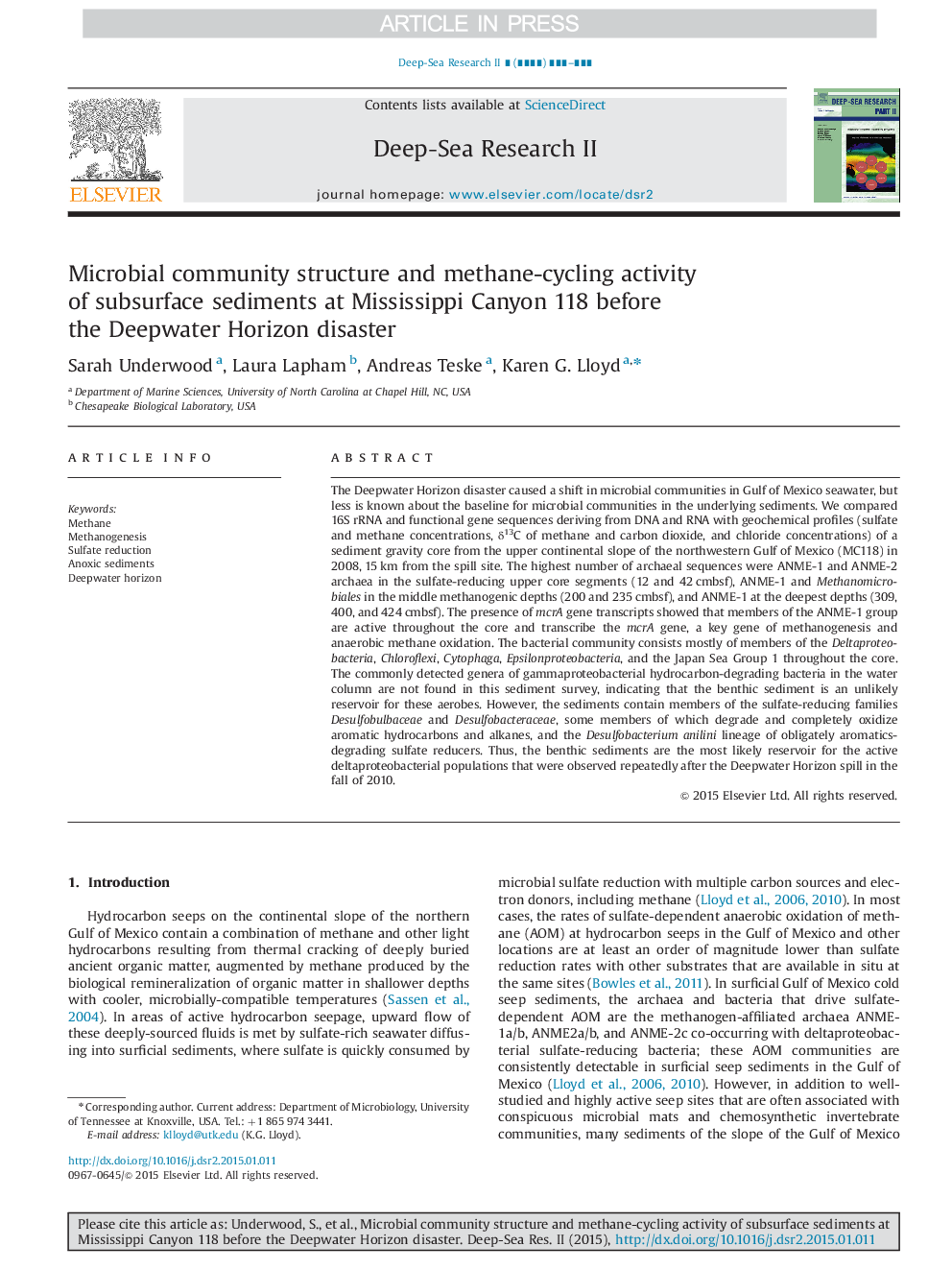| Article ID | Journal | Published Year | Pages | File Type |
|---|---|---|---|---|
| 6383939 | Deep Sea Research Part II: Topical Studies in Oceanography | 2016 | 9 Pages |
Abstract
The Deepwater Horizon disaster caused a shift in microbial communities in Gulf of Mexico seawater, but less is known about the baseline for microbial communities in the underlying sediments. We compared 16S rRNA and functional gene sequences deriving from DNA and RNA with geochemical profiles (sulfate and methane concentrations, δ13C of methane and carbon dioxide, and chloride concentrations) of a sediment gravity core from the upper continental slope of the northwestern Gulf of Mexico (MC118) in 2008, 15 km from the spill site. The highest number of archaeal sequences were ANME-1 and ANME-2 archaea in the sulfate-reducing upper core segments (12 and 42 cmbsf), ANME-1 and Methanomicrobiales in the middle methanogenic depths (200 and 235 cmbsf), and ANME-1 at the deepest depths (309, 400, and 424 cmbsf). The presence of mcrA gene transcripts showed that members of the ANME-1 group are active throughout the core and transcribe the mcrA gene, a key gene of methanogenesis and anaerobic methane oxidation. The bacterial community consists mostly of members of the Deltaproteobacteria, Chloroflexi, Cytophaga, Epsilonproteobacteria, and the Japan Sea Group 1 throughout the core. The commonly detected genera of gammaproteobacterial hydrocarbon-degrading bacteria in the water column are not found in this sediment survey, indicating that the benthic sediment is an unlikely reservoir for these aerobes. However, the sediments contain members of the sulfate-reducing families Desulfobulbaceae and Desulfobacteraceae, some members of which degrade and completely oxidize aromatic hydrocarbons and alkanes, and the Desulfobacterium anilini lineage of obligately aromatics-degrading sulfate reducers. Thus, the benthic sediments are the most likely reservoir for the active deltaproteobacterial populations that were observed repeatedly after the Deepwater Horizon spill in the fall of 2010.
Related Topics
Physical Sciences and Engineering
Earth and Planetary Sciences
Geology
Authors
Sarah Underwood, Laura Lapham, Andreas Teske, Karen G. Lloyd,
